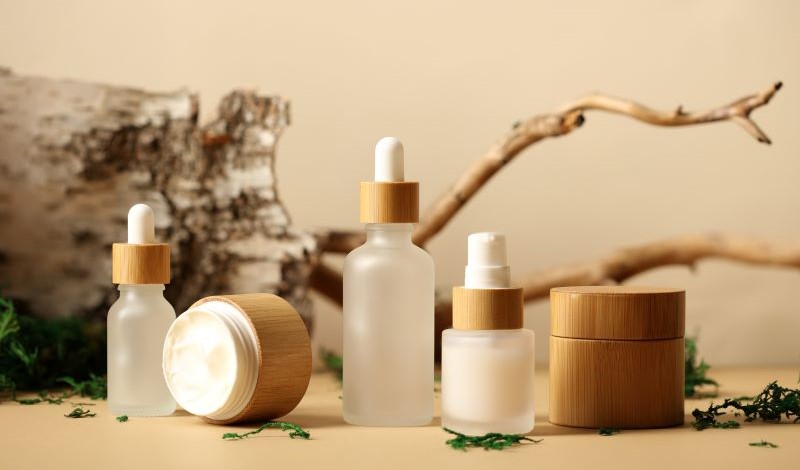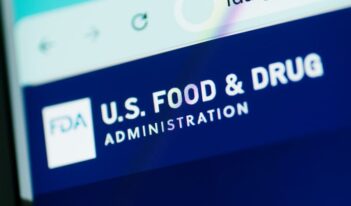
Scholars consider how the Modernization of Cosmetics Regulation Act strengthens federal oversight.
Adults in the United States use, on average, 12 different cosmetic products a day—everything from makeup and cleansers to moisturizers and hair treatments. Yet excessive exposure to chemicals in cosmetic products can pose serious health risks.
The 1938 Federal Food, Drug, and Cosmetic Act (FDCA) defined cosmetics as “articles intended to be rubbed, poured, sprinkled, or sprayed on… for cleansing, beautifying, promoting attractiveness, or altering the appearance.” The FDCA—mandating neither pre-market safety testing nor registration of cosmetic production facilities—left regulators without clear authority to ensure product safety.
Federal authority to regulate cosmetics remained largely unchanged until, on December 29, 2022, President Biden signed the Modernization of Cosmetics Regulation Act (MoCRA). MoCRA—the first major update to U.S. cosmetics law in over 80 years—brought cosmetics safety into the national spotlight.
MoCRA expands the Food and Drug Administration’s (FDA) authority to regulate cosmetic products and creates substantial new obligations for manufacturers, packers, and distributors of cosmetics sold in the United States. MoCRA also directs FDA to establish standardized testing protocols for cosmetics at higher risk of asbestos contamination and to report on per- and polyfluoroalkyl substances (PFAS) in cosmetic products by December 2025.
Scholars and policymakers debate whether rigorous pre-market safety review under MoCRA, including testing cosmetic ingredients for toxic substances, is the best model, or if FDA should instead rely on post-market surveillance and recall mechanisms to protect consumers of cosmetic products.
Supporters of pre-market review argue that preventive risk assessments are critical to avoid harm, particularly given the health danger posed by asbestos contamination and the persistence of PFAS in human bodies and the environment. Such assessments, proponents assert, will close longstanding regulatory gaps and better align cosmetics oversight with federal regulation of prescription drugs and medical devices.
Opponents counter that MoCRA’s extensive pre-market requirements risk imposing prohibitive costs on cosmetic companies without guaranteeing improved safety outcomes. Although MoCRA includes small-business exemptions for entities with annual receipts under $1 million, larger firms face steep investments, such as laboratory testing and compliance systems, to meet new responsibilities and deadlines. Critics also note that forthcoming FDA rulemaking creates regulatory uncertainty and complicates strategic planning for firms deciding whether to commit to new cosmetic product formulations or market entries.
In this week’s Saturday Seminar, scholars discuss the approval of cosmetic products under MoCRA, the transparency of cosmetic supply chains, and FDA’s role in protecting public health.
- In an article in the Review of Banking and Financial Law, Elisabeth Kotsalidis of Boston University School of Law notes that MoCRA requires both domestic and foreign manufacturers of cosmetics distributed in the United States to register with FDA and list detailed product information. Kotsalidis explains that MoCRA requires the manufacturer to designate a “responsible person,” typically at the company, to report serious health-related events associated with the product promptly to FDA. Kotsalidis also highlights FDA’s expanded inspection and records-access powers under MoCRA. This expansion, Kotsalidis argues, has transformed cosmetics regulation from a model defined by voluntary compliance into one subject to rigorous, enforceable FDA oversight.
- A report by the United States Government Accountability Office (GAO) finds that, although FDA has taken initial steps to meet near-term MoCRA deadlines, the agency has yet to develop a comprehensive implementation plan with interim goals. GAO also notes that FDA lacks a strategic workforce plan to align personnel skills with expanded oversight responsibilities. To address these gaps, GAO recommends that FDA create a detailed roadmap with measurable milestones, regularly report on progress, collect performance data, and develop a workforce strategy to meet critical staffing needs. The report warns that, without these fundamental steps, FDA risks falling short of its safety goals, delaying regulatory enforcement, and undermining public confidence in its oversight.
- In a research letter in the Journal of the American Academy of Dermatology, Kaushik P. Venkatesh of Harvard Medical School and several coauthors analyze the FDA Enforcement Report database for cosmetic dermatology products. The Venkatesh team explains that from 2011 to 2023, FDA logged 334 voluntary recalls covering 77 million product units, demonstrating that cosmetic recalls are common. The Venkatesh team finds that 76.8 percent of recalls were due to microbial contamination—suggesting the need for continued FDA surveillance of adverse-event reports and enforcement of Good Manufacturing Practices. Venkatesh and his coauthors hope their analysis will help shape upcoming FDA regulations and raise dermatologists’ awareness of cosmetic recalls.
- In an article in the Boston College Law Review, Carolyn Zaccaro of Boston College Law School examines FDA sunscreen regulation, which—by classifying sunscreen products as over-the-counter-drugs rather than cosmetics—subject new ingredients and formulations to extensive safety and labeling requirements. Zaccaro argues that this stringent review process for over-the-counter drugs has stalled U.S. sunscreen innovation for over two decades, noting that no new ingredient has been approved since 1999. Zaccaro concedes that FDA’s approach can enhance consumer safety, but contends that too much risk aversion undermines public health by discouraging sunscreen use and driving consumers toward unregulated alternatives. Zaccaro, therefore, urges Congress to fund sunscreen research or offer incentives for domestic sunscreen innovation.
- In an article in the Tulane Journal of Technology & Intellectual Property, Elizabeth Perrymanvof Tulane University Law School explains significant gaps in cosmetic marketing regulation. Perryman highlights the lack of a regulatory definition for the term “clean,” which forces cosmetics manufacturers to navigate ambiguous rules under the Federal Trade Commission Act prohibiting deceptive advertising likely to mislead a reasonable consumer. Perryman contends the lack of a definition of “clean” and inconsistent application of the reasonable consumer standard by courts in cosmetics false-advertising cases creates a regulatory vacuum that increases uncertainty for businesses and fuels class-action litigation.
- In an article in the Global Scientific and Academic Research Journal of Economics, Business and Management, Sang-Uk Jung of Hankuk University of Foreign Studies outlines steps foreign cosmetic brands must take to comply with MoCRA requirements. Jung writes that companies should integrate FDA Good Manufacturing Practices by investing in advanced quality-control technologies and rigorous safety-testing protocols. Jung explains that marketing teams must update product labels to display adverse-event contact information and full ingredient disclosures. Jung notes that companies must implement robust adverse-event reporting and recordkeeping systems adhering to strict MoCRA timelines. Finally, Jung emphasizes that firms should invest in targeted staff training and collaborate with U.S. regulatory experts to pursue competitive advantage through compliance.
The Saturday Seminar is a weekly feature that aims to put into written form the kind of content that would be conveyed in a live seminar involving regulatory experts. Each week, The Regulatory Review publishes a brief overview of a selected regulatory topic and then distills recent research and scholarly writing on that topic.



